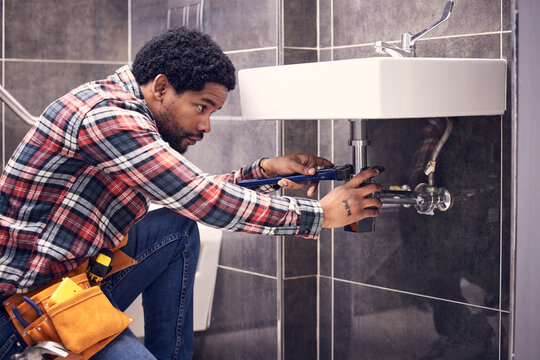A Step-by-Step Overview to Reliable Hot Water Heater Installment for Ideal Performance
Beginning on the job of installing a water heating system is a venture that requires accuracy and a systematic technique for achieving ideal efficiency. As you continue, the complexities of attaching water supply lines and setting up trusted electrical or gas connections wait for, encouraging insights into making sure performance and reliability.
Picking the Right Water Heater

Following, take into consideration the dimension and capability of the water heating system. It's important to evaluate your household's hot water requirements, which can differ based on the number of passengers and their use patterns. A system that's as well small might cause insufficient warm water, while an extra-large version could result in unnecessary power consumption.
Efficiency scores likewise play a critical role in option. Look for hot water heater with high Energy Aspect (EF) ratings, suggesting remarkable performance and minimized energy use. Tankless models, though commonly more pricey in advance, deal substantial power savings gradually because of their on-demand heating capabilities.
Preparing the Installation Location
Prior to setting up a brand-new water heating unit, meticulous prep work of the installation location is essential. It's critical to measure the room thoroughly to suit the water heating unit's measurements, ensuring appropriate clearance around the unit for reliable procedure and maintenance.
Examine the flooring for security, as the water heating unit will certainly require a strong, level surface to run efficiently. If needed, install a drip frying pan underneath the device to catch potential leakages or spills, avoiding water damages to the surrounding location.
Furthermore, ensure that all required tools and materials are on hand prior to commencing the installment. This consists of products such as wrenches, screwdrivers, a level, and any additional equipment needed for installing and safeguarding the heating system. A well-prepared installment location sets the foundation for an effective water heating unit configuration, optimizing efficiency and safety.
Connecting Supply Of Water Lines
When connecting water lines to your recently installed water heater, it is vital to ensure that all links are leak-free and protected to keep reliable procedure and avoid water damages. Begin by determining the hot and cool supply of water lines. The cool water inlet is commonly marked with a blue tag or a "C", while the warm water electrical outlet is marked with a red label or an "H".
Usage adaptable water heater connectors to promote a simpler installment process. Before connecting the adapters, position a plumbing's tape around the threaded ends of the water heating system's inlet and electrical outlet pipelines.
Once connections remain in location, gradually activate the major water supply valve. Examine each connection for leaks by visually feeling and checking for moisture. Tighten connections as required, and guarantee the pressure safety valve is correctly installed, protecting against extreme stress accumulation.
Establishing Electrical or Gas Connections
Correctly establishing the electrical or gas connections for your water heater is a critical action to guarantee efficient and safe procedure. For electric hot water heater, begin by verifying that the electrical circuit works with the heater's voltage and amperage requirements. Make certain the power supply is shut off at the breaker to avoid crashes. Attach the electrical wires to the heating system complying with the maker's electrical wiring diagram. Usually, this includes connecting the ground cord to the eco-friendly terminal, and the staying wires to their equivalent terminals, protecting each with wire nuts.
For gas water heaters, safety and security is critical. Validate that the gas supply is off before continuing. Link the gas line to the water heating system utilizing a flexible gas adapter, ensuring it is effectively threaded and sealed with pipeline joint compound or Teflon tape appropriate for gas links. Tighten the links with a wrench, making sure not to over-tighten (Plumber Alabaster AL).
As soon as connections are made, check anonymous for any kind of potential leaks. For gas lines, use a soapy water remedy to the joints; bubbles indicate a leakage. For electrical links, double-check that all wiring is safe and effectively shielded, maintaining compliance with local electrical codes.
Readjusting and evaluating for Effectiveness
With the electric and gas connections firmly in position, the next action is evaluating the operational efficiency of your water heater. Begin by very carefully transforming on the water supply and ensuring there are no leaks at any of the shutoffs or joints. As soon as validated, continue to load the container, focusing on the stress and temperature level setups. It is a good idea to set the thermostat to an advised temperature level of around 120 ° F(49 ° C) to stabilize energy efficiency and comfort.
Following, do a comprehensive assessment to make sure the heating components or burner are working correctly. For electrical heating units, utilize a multimeter to validate if the aspects are drawing the ideal present. In gas models, observe the burner fire; it must be blue and consistent, showing effective combustion.
Readjust the settings as necessary to get rid of inefficiencies. Take into consideration implementing insulation actions, such as including a hot water heater covering, to additionally enhance efficiency by minimizing warmth loss. Additionally, examine the anode rod's problem, as a worn-out rod can minimize efficiency and cause tank rust.
Verdict
Effective water heating unit setup is crucial for guaranteeing ideal performance and power financial redirected here savings. Securely connecting water supply lines and thoroughly setting up electrical or gas connections reduce potential issues.

Appropriately establishing up the electric or gas links for your water heater is a vital action to make certain effective and risk-free procedure. For electrical water heating units, start by confirming that the electric circuit is suitable with the heating unit's voltage and amperage demands. Link the gas line to the water heating unit utilizing a versatile gas adapter, guaranteeing it is properly threaded and sealed with pipeline joint compound or Teflon tape suitable for gas links.